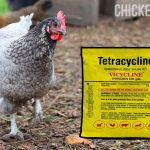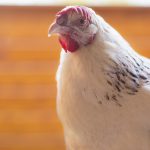12 Reasons Chickens lay Soft Shell Eggs
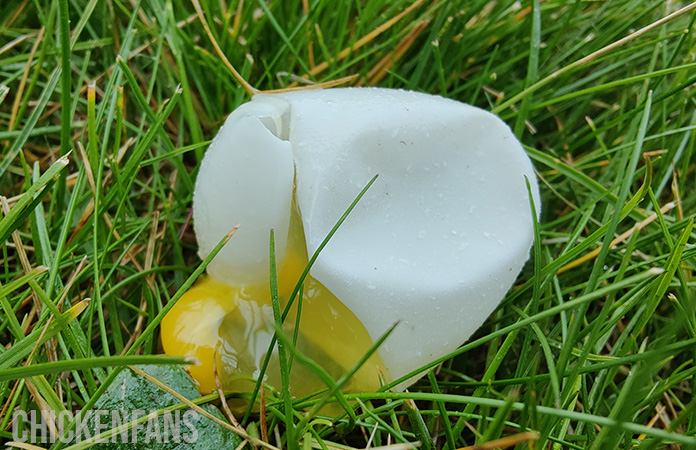

If you have chickens, chances are you’ve seen a soft-shell egg. There are several reasons why hens can lay soft-shelled eggs, and you should not worry at all if it happens once.
But why do chickens lay soft shell eggs? How can you prevent it from happening?
Let’s dive into the world of eggshells and figure out what’s going on.
- What are soft shell eggs
- Causes of soft shell eggs
- Reasons chickens lay soft shell eggs
- How to stop chickens from laying soft shell eggs
- Is it safe to eat soft shell eggs
- Summary
What are Soft Shell eggs?
Soft-shell eggs are normal eggs with a very thin shell or no shell at all. The membrane keeps the yolk and albumen together when the shell is missing. The thin-shelled eggs are very fragile and sometimes crack in the chicken’s body, damaging the reproductive tract, which can be fatal.
The thin calcium-deficient shells are easily cracked with your fingers. When there is no shell, the eggs feel like little water balloons and usually don’t survive long. You can find them broken in the nesting boxes or at random places in the run and coop.
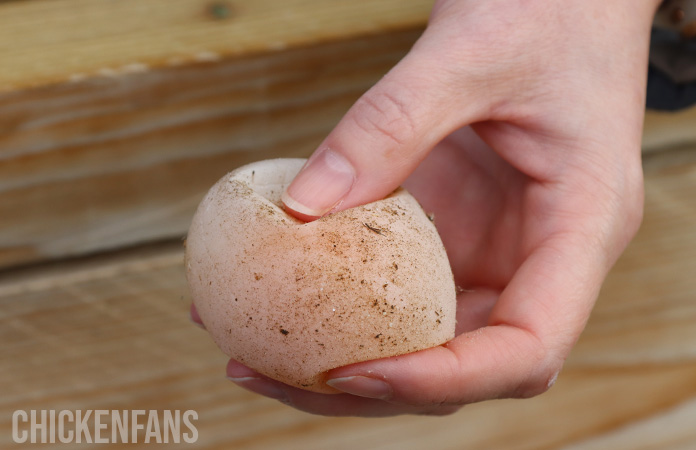
What Causes a Hen to Lay a Soft Shell Egg?
Soft shell eggs are caused by quirks in the eggshell-building process. It takes about 20 hours for a shell to develop in the shell gland. If there is a lack of calcium, a shell-gland problem, or the egg leaves the gland too quickly. The result is a soft-shelled egg.
In total, it takes about 24 hours to form a whole egg. Chickens have many tiny yolks in their ovary, ready to develop.
When a yolk starts its journey, it passes through the magnum, where the egg whites are developed. Then they move to the isthmus, where the shell membrane forms. The eggshell is created when they arrive in the shell gland or uterus. From that point, it takes about twenty hours before the egg is laid through the vent.
In the case of a soft-shelled egg, everything in the process goes well up until the shell formation in the shell gland.
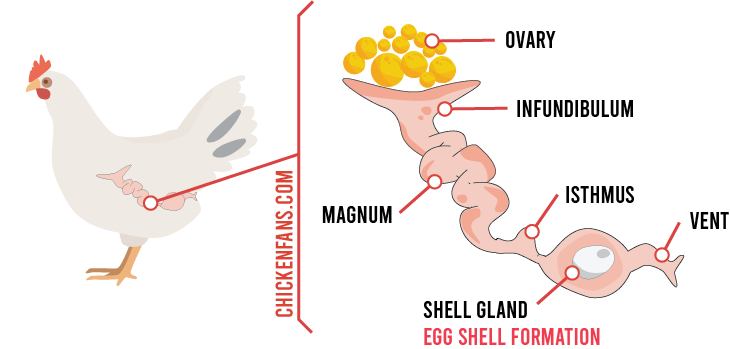
Then one or more of the following things goes wrong:
- there are insufficient nutrients, like calcium and proteins, to build the shell
- a medical condition like Infectious bronchitis or Egg Drop Syndrome prevents the shell gland from doing its work properly
- the egg is pushed out too quickly, which doesn’t give the egg enough time to develop a proper shell
Let’s make this more concrete and look at the top reasons why a hen lays soft shell eggs.
12 Reasons Chickens Lay Soft Shell eggs
There are several reasons why chickens lay soft-shelled eggs. When multiple flock members lay soft shells, it’s probably an external reason the flock deals with, like hot weather or a stressful situation.
If it’s only a single hen in the flock laying soft shells, there is probably something going on with her. It doesn’t always have to be a medical condition. It can also be that she just started laying.
1. The pullet just started laying eggs
It’s very common for young birds to start with smaller, thin-shelled eggs because of their immature shell glands. It’s certainly nothing to worry about and will resolve after a couple of eggs. Some pullets lay miniature eggs, called fairy eggs, weirdly shaped eggs, or lay double yolk eggs.
The egg production machinery is activated when young pullets start to lay their first eggs. Laying an egg is very demanding for the chicken’s body, and it’s a complex biomechanical system. Hens can not get all the calcium for the eggshell out of their food. That’s why they have extra reservoirs of calcium in their skeleton.
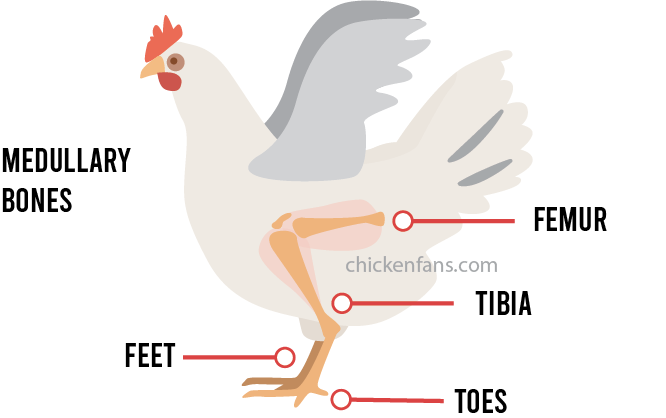
Hens have bones that can store extra calcium in bone tissue, like the thigh bone (femur) and the shank bone (tibia). The bones in their wings and toes also have this special bone tissue on their surface.
These bones are called medullary bones. Chickens mobilize almost half of the calcium in their bones to add to the dietary calcium. Without the extra calcium from the medullary bones, a chicken lays eggs with fragile and weak shells.
In young chickens with a lighter skeleton, all these processes are firing up to produce their first eggs. So make sure they switch to layer feed in time and that they have access to calcium sources. Switching the birds to layer feed three weeks before their first egg allows them to build up some calcium reserves in their skeleton.
2. Calcium Deficiency
An eggshell is made almost entirely out of calcium carbonate crystals. Chickens get the necessary calcium from their food and their medullary bones. When layer hens mature, they mobilize 47 percent of their body’s skeleton calcium to make an eggshell.
The egg stays 20 hours in the shell gland to form the crystals, but if there is no calcium, the shell can’t form. Ensure laying hens have access to layer feed and extra calcium sources like oyster shells.
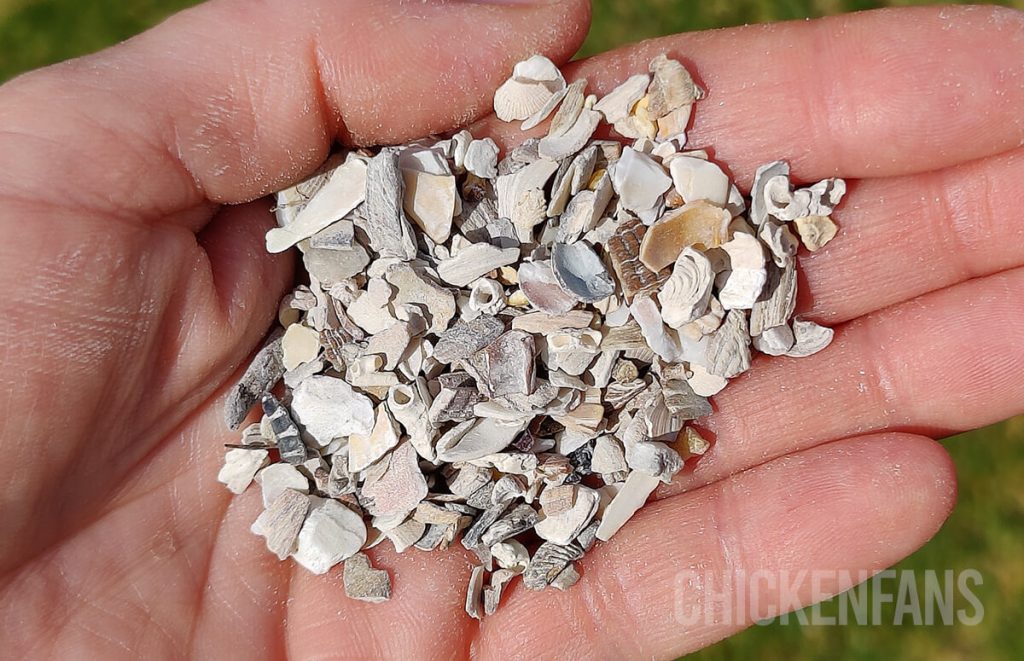
3. Stress
Stress is one of the major causes of delayed egg-laying and eggshell abnormalities. If the chicken undergoes any stress before the yolks reach the shell gland (where the eggshell forms), the entire shell formation is affected, resulting in soft-shelled eggs.
The higher the stress levels and the longer it takes, the more abnormal the deformities and the more thin-shelled eggs. The stress disturbs the egg production processes and can simultaneously accelerate egg laying. Stress can even switch a chicken to survival mode and completely shut down the egg laying.
There are multiple reasons why chickens can have stress. Common examples include:
- when they move to a new chicken coop or when they are added to a new flock
- when there is not enough space, use our chicken run size calculator to see if your chickens have enough wiggling room
- when there is an eager or aggressive rooster or when there are not enough hens for every rooster
- when there is bullying and pecking going on
- when they are living in shady confinement conditions or chicken coops lacking the correct infrastructure
- when there has been an attack by a predator
- when there is a red mite manifestation
- when the chicken has a viral or bacterial infection
The link is so strong that the poultry industry counts the number of abnormal eggs to indicate the stress levels their chickens are suffering.
4. It’s too warm
A very specific reason for thin-shelled eggs is heat stress. Apart from the stress hormones, the heat comes with high ambient temperatures that interfere with the chicken’s body processes.
One example is the calcium-binding protein calbindin-D28k, an essential protein for eggshell building. When temperatures are high, the protein is missing in the eggshell gland and can’t do its job properly. Coop temperatures above 80°F (27°C) negatively affect the eggshell thickness and density. Heat stress generally decreases the amount of circulating ionic calcium in the chicken’s blood.
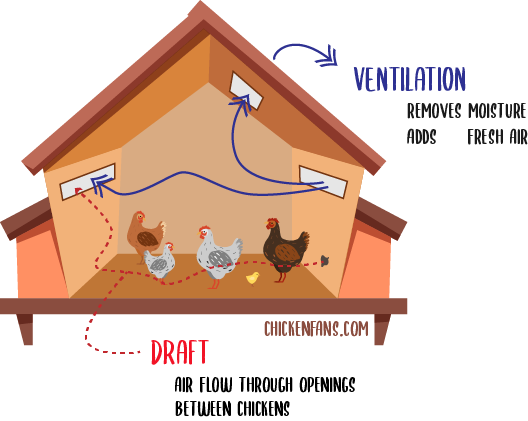
Chickens release heat by panting, and the respiratory system plays an active role in thermoregulation. When it gets hot, their respiratory rate increases, and their breathing cools them down. However, this releases excessive amounts of carbon dioxide (CO2) that is necessary to build the calcium carbonate (CaCO3) in the eggshell. One way to prevent carbon deficiencies is to give your chickens carbonated water to drink.
The heat typically affects multiple members of the flock. With inadequate ventilation, the air quality can drop drastically due to ammonia fumes. Bacteria in the chicken’s droppings break down nitrogen to generate toxic gases with a pungent odor. This can agitate the birds, give them stress, and irritate their eyes, sometimes with foamy bubbles.
When you live in an area with hot summers, make sure to:
- have appropriate ventilation in your chicken coop
- provide shelter and shade in the chicken run
- use systems to cool down your chickens when it gets too hot
5. Infectious Bronchitis
Many diseases can result in soft shelled eggs, but one of the most common causes is Infectious Bronchitis.
Bronchitis is a common respiratory disease caused by the avian coronavirus. It’s not always apparent that a respiratory disease can influence the eggshell and is often missed in diagnosing thin-shelled eggs.
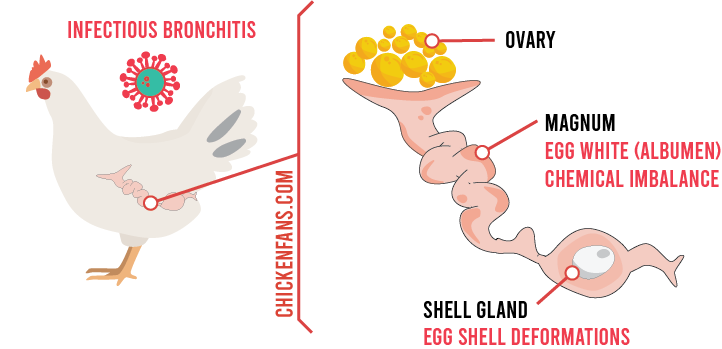
Bronchitis interferes with the chemicals produced in the Magnum, the organ where the egg whites form around the yolks. This results in distorted egg membranes, which eventually disrupts eggshell mineralization. The end result is a thin distorted, body-checked, or corrugated eggshell.
6. Egg-Laying & Other Diseases
Thin-shelled eggs can be an outcome of disease too. When the chicken’s body fights disease, other less survival-critical biological processes are scaled down. In severe conditions, the hen can even stop laying eggs. The immune system uses all the energy in the chicken’s body for survival.
Diseases also directly impact the body’s processes and can interfere with the hen’s ability to lay proper eggs. Some diseases will directly impact the egg machinery of a chicken:
- Avian Osteoporosis – called Cage Layer Fatigue, is a common condition in laying hens. Chickens show progressive loss of structural bone tissue. This is especially apparent in the laying period because the shell gland uses too much calcium from the medullary bones. This results in fractures and structural bone loss, thin eggshells, sometimes deformed legs, and difficulty standing.
- Egg Drop Syndrome – a viral disease that targets laying hens. The adenovirus causing the Egg Drop Syndrome comes from ducks and geese. It was probably transmitted to chickens with contaminated vaccines. When infected, the eggs will change in color first. Then, chickens will lay smaller thin-shelled, soft-shelled, or shell-less eggs.
- Egg Yolk Peritonitis – a condition that occurs when the eggshell gets ruptured, and the yolk is moving freely within the body cavities of the bird. This condition goes hand in hand with secondary infections and can result in multiple soft thin-shelled, or shell-less eggs.
Other diseases can indirectly impact eggshell production, and the link might not always be that obvious.
Other Diseases
Following other diseases can result in thin eggshells:
- Avian Intestinal Spirochetosis: an intestinal disease caused by a bacterial infection. Hens lay smaller eggs with pale yolks and thin, poor eggshells.
- Defective Shell Gland: the eggshell develops in the shell gland, so an underdeveloped shell gland or any other shell gland condition will directly impact the eggshell.
- Salpingitis: an inflammation of the oviduct, usually due to a bacterial infection from the vent (cloaca), often results in malformed eggs with thin eggshells
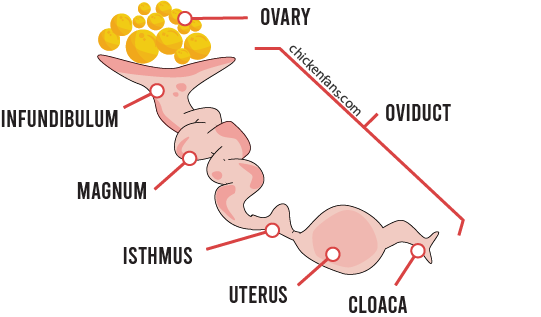
- Ornithobacteriosis: a contagious bacterial disease that can result in smaller, deformed, or thin-shelled eggs.
- Avian Influenza: a global contagious viral infection that can affect the respiratory tract and multiple organs.
- Chronic Respiratory Disease: mycoplasmosis is a common upper respiratory disease.
- Ochratoxicosis: poisoning with mycotoxins generated by fungi; contamination is commonly seen in commercial feed.
- Ovarian Tumors: unfortunately, cancerous ovarian tumors are common in chickens
- Newcastle Disease: Newcastle Disease is a global viral disease with terrible symptoms such as twisted neck and wing paralysis
7. Vitamin Deficiency
Vitamin D is a fat-soluble vitamin that plays a prominent role in calcium processing. It’s an essential vitamin for growth, bone health, and eggshell formation.
When chickens lack vitamin D, they will lay fewer, smaller, deformed eggs with thin shells. With severe deficiencies, inadequate calcium levels can cause softening of the beak and deformities of the legs. Chronic deficiencies result in lower bone mineral densities and an increased risk of osteoporosis.
There are several forms of vitamin D. Vitamin D3 is the most important for egg-laying and calcium processing. It plays a vital role in the growth of chicks and the egg-laying of hens.
Chickens get vitamin D3 in two ways:
- by direct sunlight, where it is photochemically synthesized from ultraviolet light
- via the diet and optional vitamin D3 supplementation
Sunbeams that travel through the glass in windows are filtered and lack the needed ultraviolet light.
When adding supplements to the diet, it’s important not to exceed the daily recommendations. Adult laying hens should be somewhere around 3500 IU/kg of vitamin D3. Overdosing in vitamin D3 can lead to calcium excesses in the bloodstream, resulting in hypercalcemia. This can result in heart problems and liver issues.
8. Manganese Deficiency
Manganese is an essential dietary nutrient for chickens. It’s a coenzyme in the biological processes of bone and eggshell formation. It’s also a vital nutrient in the operation of several proteins. Manganese deficiency results in thin, deformed, or soft shell eggs and can lead to parrot beaks in growing chicks.
The current guidelines recommend 60mg/kg of manganese for laying hens and broilers. Diets often contain much more manganese than the daily recommendation, and deficiencies are rather rare.
Some people believe adding Manganese will aid in egg laying. Scientific studies concluded that adding inorganic manganese supplementation up to 200mg/kg did not improve egg-laying performance. However, there might be a difference between organic and inorganic supplements. In some cases, it seems that increasing to 90mg/kg can improve the eggshell quality and thickness.
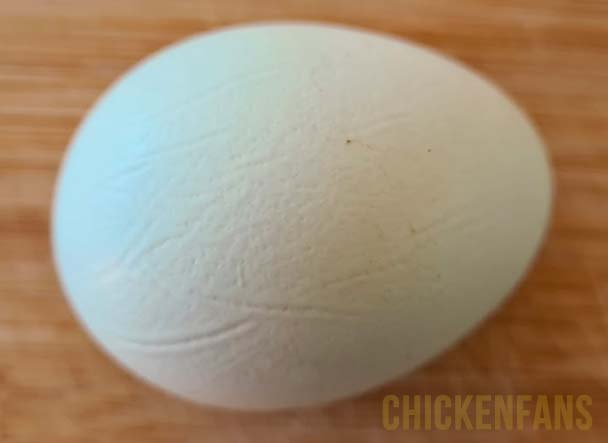
9. Genetics of Egg Layers
With selective breeding, some chicken breeds, like the Leghorn, are turned into egg-laying machines that produce over 300 eggs per year. The birds are genetically selected for their egg-laying qualities and not for the thickness of their eggshells.
Some fast layers drastically reduce the total build time from egg yolk to egg laying. When the egg doesn’t stay long in the shell gland, the resulting shell will be thinner. Sometimes the eggs come so fast that the hens lay two eggs in a single day.
Due to genetics, some fast-laying hens are predisposed to laying soft-shelled eggs.
10. Age and Laying periods
When hens get older, their egg-laying machinery is slowly deactivated. There will be fewer eggs, with thinner shells and a higher chance of soft-shell eggs. The metabolism slows down as birds get older. Fast egg layers can’t mobilize enough calcium from their medullary bones to create strong eggshells.
The chances of getting soft-shell eggs are higher the older the hens get. Due to age-related changes, the shell structure and thickness will deteriorate slowly. Eventually, the hen will stop laying.
The same holds true when the hen is approaching the end of a laying period. The complete process of shell formation spread over a full laying year is biologically a stressful event. When the end of the laying period approaches, eggshell quality declines, which can result in thin shells or soft-shelled eggs.
11. Diet and Overweight Chickens
Chickens should get enough nutrients in their diet that aid in shell-forming. Sufficient calcium and vitamin D3 are crucial elements. But other vitamins and minerals, like vitamin C and phosphorus, also play a role in metabolism.
Feeding chickens with kitchen scraps can seem like a good idea, but it often leads to a shortage of vital micronutrients. Some feeds, like wheat, don’t contain sufficient amounts of protein for laying hens. And other feed, like maize, can cause your hens to build up internal fat surrounding the organs.
Overweight chickens that carry too much fat will produce fewer and lower-quality eggs. Sometimes these eggs are thin-shelled or have no shell at all.
If a thick layer of skin covers your chicken’s breastbone, it might have weight issues. Prefer balanced layer feeds, limit the number of treats and let the birds free-range if possible.
12. Daylight
Chickens sleep when it’s dark. When the days get longer, they stay awake longer. Over the year, they get various amounts of sunlight depending on the day’s length.
In poultry science, this is called the photoperiod. It’s the amount of time during which the chickens get some daylight. A lot of times, the days are artificially prolonged to increase egg production.
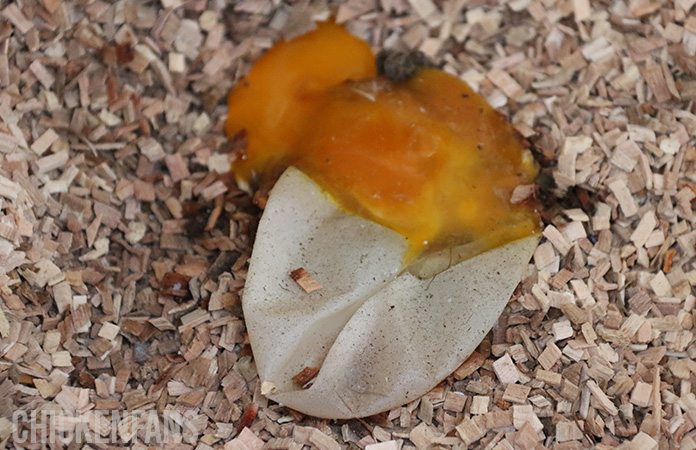
The photoperiod has a significant influence on egg quality and eggshell thickness. The light regulates important hormones of the chicken that play a crucial role in egg development. The luteinizing hormone (LH) and follicle-stimulating hormone (FSH) regulate the essential processes in the oviduct and follicle. Estrogen activates the reproductive system and is regulated by light.
Short-day light can decrease egg production and quality, increasing the chances of soft-shelled and thin eggs. Artificial light is widely used in poultry to counter short days and increase egg production. The results suggest that a minimum of 13 hours of light is needed for optimal egg production. Eggshell quality and production are optimal when chickens receive 14 to 18 hours of natural light daily.
How do I stop my chickens from laying soft-shelled eggs?
To prevent chickens from laying soft-shelled eggs, ensure they are stress-free, have a proper diet, have enjoyable ambient temperatures and enough daylight, and are healthy and free from any diseases.
- provide your flock with a diet that contains calcium, phosphorus, manganese, and essential micronutrients. Limit the number of treats.
- ensure they have appropriate housing conditions and enough space in the coop and run; prefer free ranging over confinement
- protect your chickens from predators, any attack or luring predators can bring a lot of stress
- avoid social stress in the flock by separating bullies and overly eager or aggressive roosters
- ensure the chicken coop has proper ventilation to bring in fresh air
- give your chickens enough light during the day; prefer proper daylight over artificial light
- provide plenty of shade and cool down your chickens during hot summers
Is it safe to eat a soft-shell egg?
No, it’s not safe to eat a soft-shelled egg. The eggshell and the natural bloom coating protect against the infiltration of bacteria from the dirt, feces, and blood. Eating soft-shelled eggs can result in food poisoning, Salmonella infections, nausea, vomiting, and diarrhea.
Even removing the protective bloom that covers the eggshell is not recommended. It’s a natural barrier that prevents bacteria and toxins from entering the eggshell. That’s why you don’t need to wash eggs before storing them, only before eating them.
Summary
Soft-shelled eggs are common and not necessarily a problem. When chickens start laying or are approaching the end of a laying period, they sometimes produce thin-shelled or soft-shelled eggs.
The eggshell forms in the shell gland of a chicken. The calcium to create the shell comes from the chicken’s diet, calcium supplements, and medullary bones. The medullary bones are skeleton bones that can store calcium reserves.
Thin shells and soft shells occur when there is either an issue with the shell gland, insufficient material to form the shell, or when the egg passes too fast so the shell can’t form.
These conditions can be caused by malnutrition, stress, heat, lack of daylight, diseases, or health issues in general. Some diseases like Egg Drop Syndrome or Avian Osteoporosis directly impact the shell formation process. Other diseases like Infectious Bronchitis can have a rather indirect effect.
If you want to read more about chicken health problems, symptoms, and diseases, check out our ‘Health Page‘. You’ll find a ‘Symptom Checker‘, a complete list of ‘Chicken Behavior‘, and an overview of the most common ‘Chicken Diseases‘. Or go to ‘The Classroom‘ and find a comprehensive list of all Chicken Fans articles.
Related Articles:
Egg Binding in Chickens: Symptoms and Treatment (+ Vet Advice)
Blood in Egg Yolk: Should you Worry?
5 Reasons your Chicken is Making Gurgling Sounds
How Many Eggs Does A Chicken Lay A Day?

Dr. M. Amjad is a licensed veterinarian with vast experience in diseases, management, and treatment of chickens from working as an assistant manager at poultry farms and feed mills. He has published work on risk factors of antimicrobial resistance of campylobacter species found in poultry meat.



